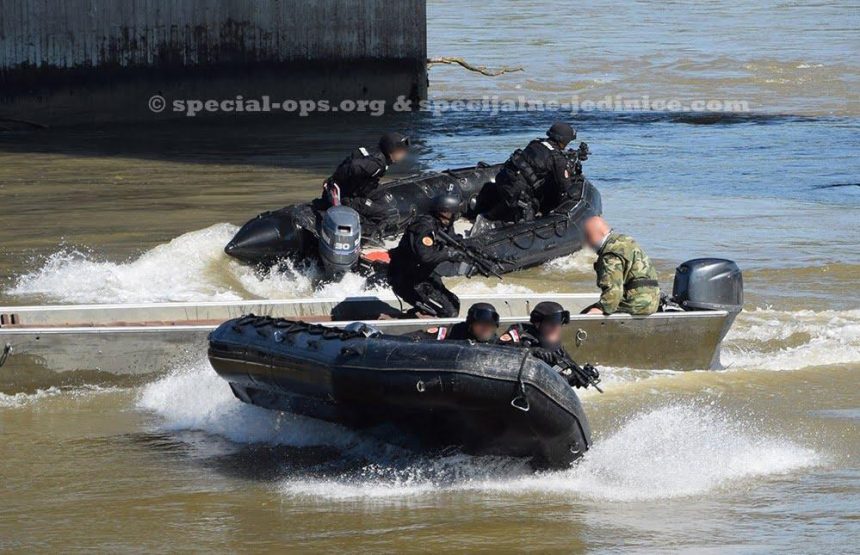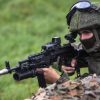Serbian Gendarmerie is a highly operational unit established under the Police Directorate of the Serbian Ministry of Interior. It is a military-police unit whose purpose is now defined by the new Police Law that brought the status of a special unit.
History
The tradition of the Serbian Gendarmerie goes back to the 19th century when a Gendarmerie Company was established in the city of Belgrade after Serbian Prince Mihajlo issued a Decree stating the Company would be in charge of preserving and protecting public order and peace throughout the Serbian capital. This Company gathered around 120 infantrymen and 15 cavalrymen in its strength.
The tradition of generations of the Serbian gendarmes is filled with accomplishments and heroic deeds that are being remembered today and are an essential part of the professional socialization of modern Gendarmerie police officers.
After the armed conflict in the Serbian southern region Kosovo and Metohija were finished, the Serbian state establishment concluded that Special Police Units (Serb. Posebne jedinice policije), even though have shown great character and determination, were not up to pair for regular police tasks and jobs, primarily due to their impermanent personnel in ranks.
That is why several officials came up with an idea to establish a modern and professional unit of a military-police type which should be organized under territorial criteria to be highly operational throughout the State territory. In June 2001, as a result of efforts of the former Minister of Interior Dušan Mihajlović, Chief of the Public Security Department Sreten Lukić, and Police Colonel Goran Radosavljević Guri, the professional unit Gendarmerie was established with a primary purpose of fighting terrorism and preserving or establishing public order when disrupted in larger intensity or ground area.
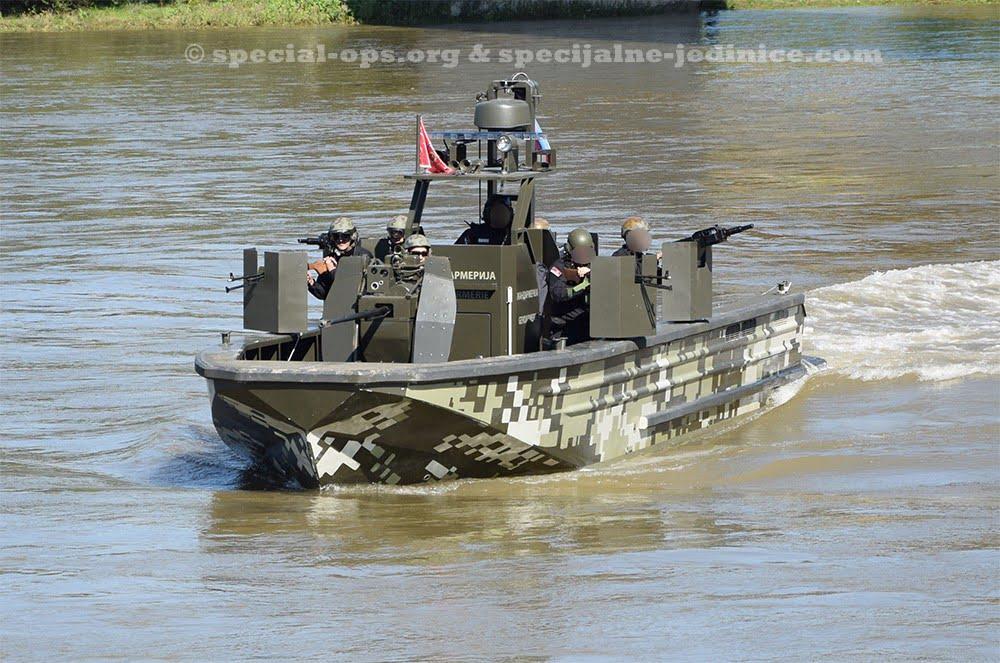
Colonel Radosavljević was the first commander of the modern Serbian Gendarmerie until August 2004, when succeeded by Borivoje Tešić. The next commander was Srđan Grekukolić, followed by Bratislav Dikić. In August 2013, Dikić ceded commanding duties to Police Colonel Milenko Božović, who was succeeded by Colonel Goran Dragović, who is the present commander of the unit.
The name of the unit was chosen as a result of a desire to continue the tremendous Serbian warrior tradition, which is nowadays highly respected, not only by the operators but by educated civilians as well.
Tasks and organizational structure
As a special unit Serbian Gendarmerie is intended for:
- counter-terrorism at the operational and tactical level, as well as fighting other forms of organized crime,
- providing and preserving public order, as well as working on its recuperation when disrupted in a broader area or higher intensity,
- other police tasks and jobs in accordance with the ongoing Serbian legislation.
At the moment, Serbian Gendarmerie counts around 2800 operators in strength. The Command of the Gendarmerie is established in Serbian Capital, Belgrade. The main operational element consists of four detachments located in four strategically important cities: Belgrade, Novi Sad, Kraljevo, and Niš.
These detachments are organized as highly independent units to be able to execute everyday duties on their territory of jurisdiction and, when needed, can quickly assist others throughout the State territory. Every detachment has its specialized unit (Serb. specijalistička jedinica) of a company rank with specially trained and equipped operators, ready to face the most complex threats in urban and rural surroundings.

Specialized units compile several anti-terrorist teams, each that can be reinforced with sniper groups, K9s, and EOD specialists when needed. The diving Unit of the Serbian Gendarmerie is organized in Belgrade and, as a specialist element, is intended for conducting special actions in all water surroundings, on water surfaces, as well as the land area near the water.
Since 2005 operational capacities of the Gendarmerie have been increased with the Personnel and Infrastructure Protection Unit, which is specialized in tasks and jobs of physical and technical protection.
Selection and training
To apply for a workplace within the operational element of the Serbian Gendarmerie, one must be an active officer of the Serbian Ministry of Interior with at least two years of service and good professional results and file. At the moment, civilians are not allowed to apply for an operational-type job place but can be enrolled as doctors, mechanics, psychologists, etc.
Selection
There is a difference between a selection for a place in the “regular” element of the Gendarmerie and the one for a place within specialized units. The second one is usually of a “closed” type. Thus only active gendarmes can apply to undergo tough selection training for a place in the elite specialist element of the Serbian Gendarmerie. Those attracted by diving can apply voluntarily when the Diving Unit issues a job opening.

Willing candidates must submit asked documents on time before the selection starts. Every candidate is being checked, and if he receives a security clearance, being called up for initial tests of physical strength and stamina, along with a special personality test. Those who meet the criteria are being admitted for detailed health inspection.
Basic Training
If he receives a positive evaluation, a candidate is dispatched for a classical drill, lasting for 3 to 4 weeks in police training centres in the country. During this period, instructors expose candidates to extreme efforts combined with a minimal rest period in order to test their motivation to become a part of the Serbian Gendarmerie.
Daily activities include challenging and often physical exercises, marches through rough terrain in full combat gear, tactical situations, and problems in urban and rural surroundings and similar. Every candidate is obligated to bear a rifle, Zastava M70 AB1 or AB2 continuously, both chambered for 7.62×39 mm caliber, which are Serbian versions of the famous Russian Kalashnikov system, along with a semi-automatic handgun CZ 99 in 9 mm caliber, manufactured by the Serbian producer Zastava Arms.
One`s combat set is completed with an old military camouflage uniform, tactical vest, and ballistic helmet. The results of every candidate are carefully monitored by a team of instructors, a psychologist, and a doctor, including their scores in individual tasks as well as in group ones because the unit needs only those who are strong individuals but able to fit into the team actions as well.
At the end of the drill, if evaluated positively, a candidate is admitted for Basic Training, which is defined by the Plan and Program of Training for the Operators of the Serbian Gendarmerie and includes firearm training, small unit tactics, basics of counter-guerrilla warfare, survival in the rural and urban environment, etc. New Gendarmerie operators are expected to be familiar with all armament systems which are being used in the unit, as well as specialized service vehicles.
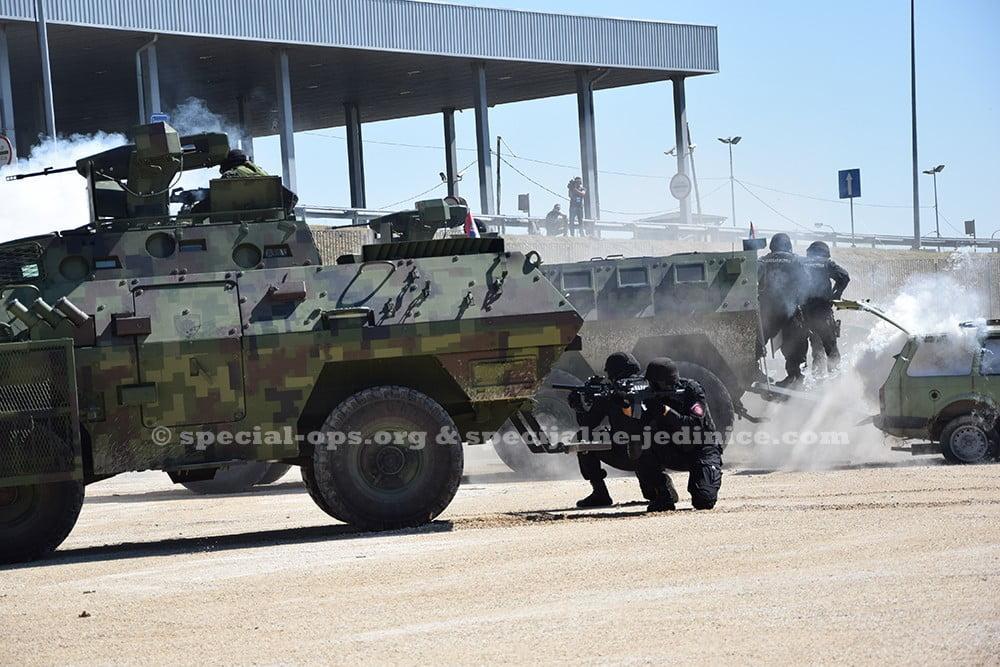
Specialization
Depending on individual preferences, some operators could be admitted for a specialization in a particular area of training and later admitted to a correlating Gendarmerie unit. Gendarmes’ training is continuous as long as they are active in the unit. After some period, a gendarme with an excellent professional result can apply for a selection for a place in a specialized unit, which is much more demanding.
Operators of the specialized unit are daily trained to conduct special actions in rural and urban environments, with special attention to counter-terrorist actions, as well as arrests of dangerous suspects and criminals and the hostage crisis in all conditions. Their firearm and shooting training is more advanced and more often, along with their special physical training, which includes practicing martial arts, developing physical strength, power, and agility, as well as alpinism in urban and rural surroundings.
Specialists also meticulously study tactics of small units, actions such as ambushes, blockades, and surroundings, but also some elements of diversions and raids. To improve their overall training and combat readiness, the Command often organized joint exercises, courses, and seminars with colleagues from elite units abroad.
Weaponry and gear
Gendarmerie units possess systems from national producers as well as those from high-quality foreign manufacturers.
Sidearms
In the handgun category, primary in use are semi-automatic handguns in 9 mm caliber. The majority of operators in the regular Gendarmerie element use the CZ 99 handgun in 9 mm caliber, which is a rough short-stroke weapon with a 15-round mag capacity.
The series is produced by Zastava Arms from the city of Kragujevac and constructed by the Swiss SIG Sauer P226 series. The main model used in specialized units is Austrian Glock 17 Gen 3 in 9 mm caliber, usually holstered in BLACKHAWK! Serpa Tactical Level 2 and Level 3 holsters.
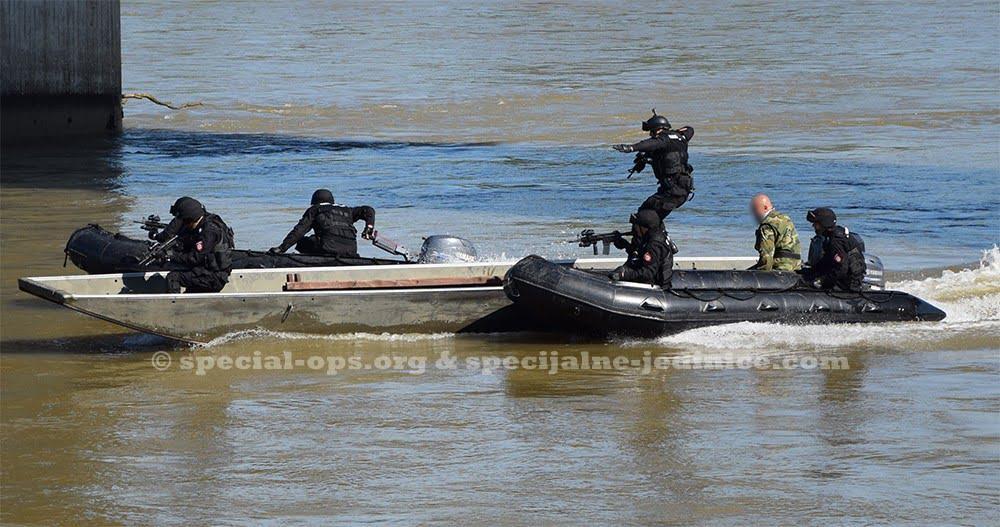
Submachine guns
As for submachine guns, operators mostly use German HK MP5 in various models, primarily A2 with a telescopic stock, but units also possess A3 variations, compact K models, as well as suppressed SD3, all in 9 mm caliber. Some operators choose to use Serbian carbines Zastava M92 in a more powerful caliber 7.62×39 mm, produced by Zastava Arms.
Assault rifles
Considering assault rifles, operators of the Serbian Gendarmerie use various Kalashnikov models along with Western systems. National producer Zastava Arms provides AK versions in 7.62 mm, already mentioned Zastava AB1 with a fixed wooden stock and AB2 with a foldable skeletal stock, along with Zastava M21 systems, usually in S version (equipped with Picatinny rails) and chambered for 5.56 NATO.
It should be mentioned that gendarmes often modify the AB2 series with a Magpul buttstock, UTG front handguard, and Picatinny rails, along with a UTG red dot sight. Besides these systems, the specialized unit also possesses reliable US carbines Colt M4 A4 Commando in 5.56 mm NATO, as well as East-German AK47s in 7.62 mm, often fitted with grenade launchers. The US carbines were purchased along with a Surefire accessory that combines a tactical light and an assault handgrip. All carbines are also equipped with reflex red dot sights Aimpoint CompM3.
Light machine guns
For greater firepower, light machine guns, Zastava M84 in 7.62×54 R caliber can be used, along with automatic 30 mm grenade launchers Zastava M93. Specialized vehicles are often seen with various heavy machine guns mounted.
Sniper rifles
When it comes to precision, thrust is being given to semi-auto Kalashnikov versions, mostly in 7.62 mm. Specialized units possess German HK G3 in semi-auto models, along with reliable Steyr Tactical Elite in .308 Win and semi-auto SIG Sauer 716 Precision Marksman in 7.62×51 mm NATO. The last two series are combined with KAHLES optic sights and Milmont optic carriers. For engaging long-range, covered, or armored targets, specialists usually use national bolt-action rifles Zastava M93 Black Arrow in devastating 12.7×108 mm, along with the US semi-auto Barret M82 with Swarovski optics chambered for 12.7×99 mm NATO. Sniping specialists usually use ghillie suits purchased from Mile Dragic producers.
Personal gear
Head protection is achieved with MD 97 ballistic helmets, produced by the Serbian manufacturer Mile Dragic which provides an IIIA level of protection acc. NIJ STD 0106.01, along with GCF Gallet S.A. in matted black color, which were purchased for Gendarmerie specialized units. Ballistic vests are mostly being purchased from Mile Dragic in black and rural camouflage patterns.

Uniforms
Given tasks and duties are carried out in tactical uniforms purchased from several national producers. For urban actions, operators generally use two-pieced Tactical One uniforms in AT Digital camo, bought from Mile Dragic. At the same time, specialized units` operators also have black ones from Mile Dragic and another Serbian producer Yumko A.D. When conducting actions in rural areas, operators usually wear two-pieced Tactical One uniforms in rural digital camo by Mile Dragic, specially developed for the operational standards of the Serbian Gendarmerie.



